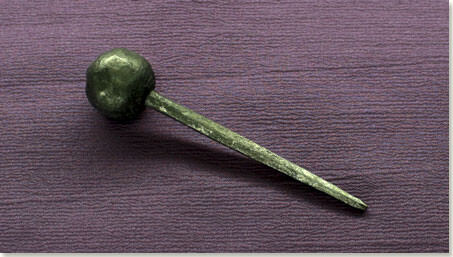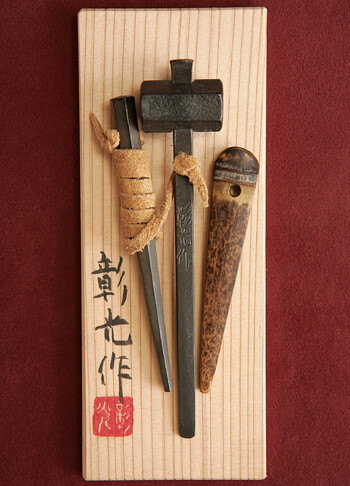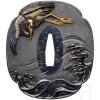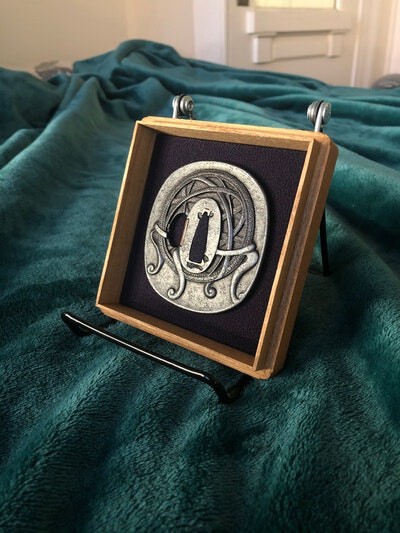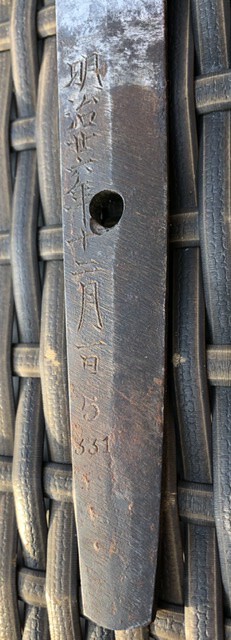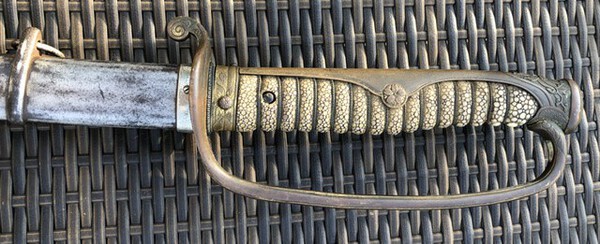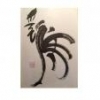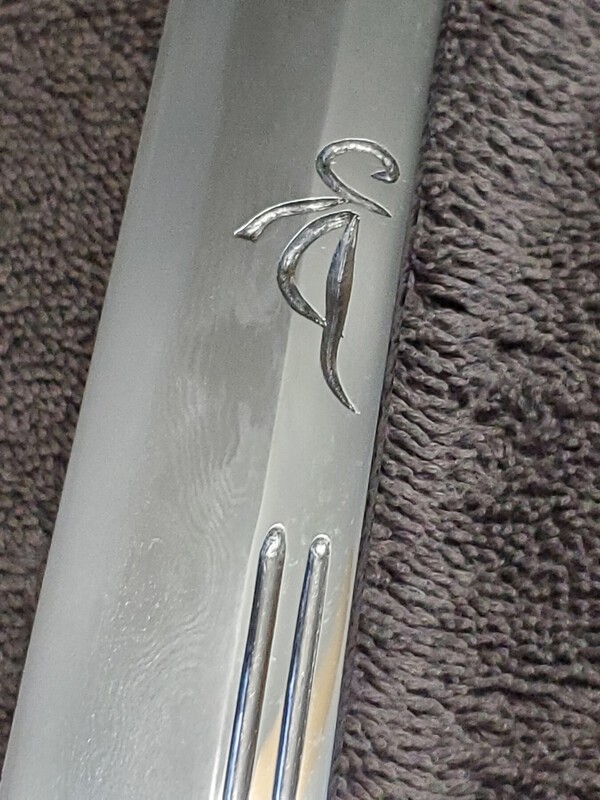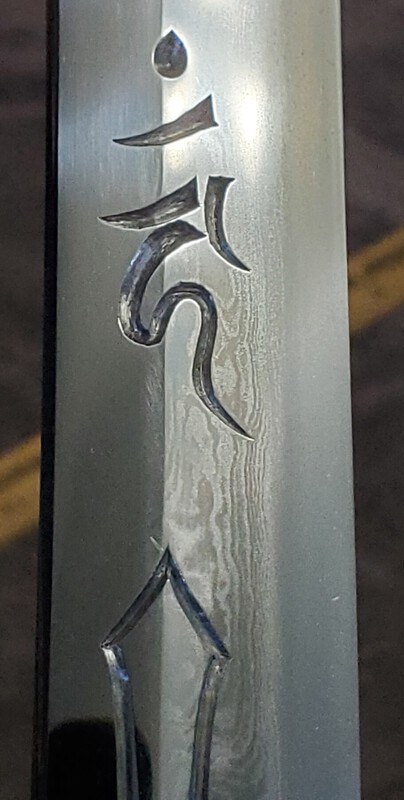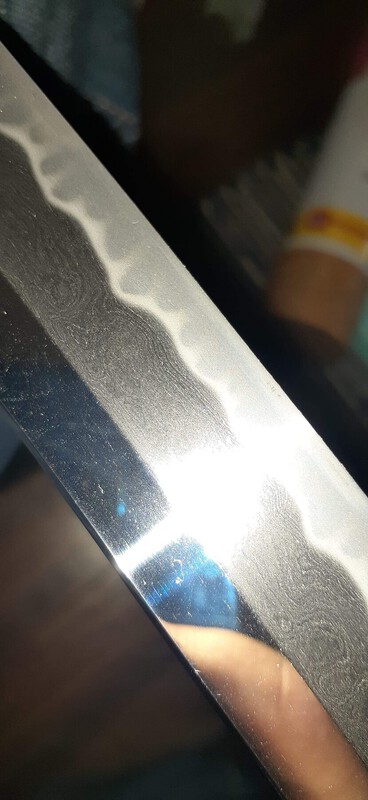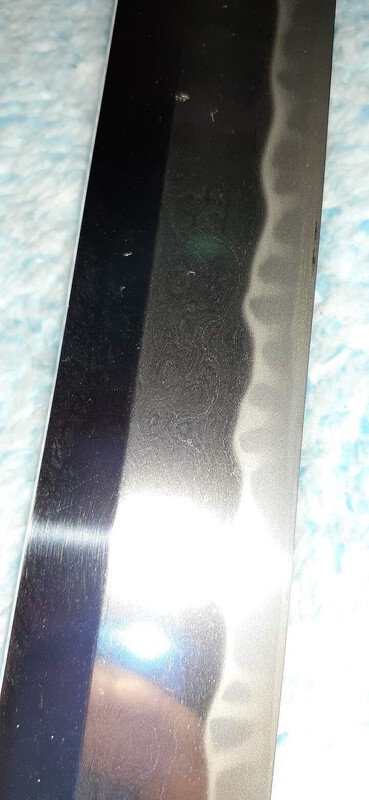Leaderboard
Popular Content
Showing content with the highest reputation on 11/21/2020 in all areas
-
I thought this blade might be of some interest to collectors of Gunto and Showato. It is a 43" (Nagasa!) O-tachi by Hikosaburo Akihide. It must be among his first swords made when he was only 18 years old. He made it to comerate his brothers safe return from the war. Akihide was a pivotal figure in the Japanese Sword world leading up to and including the war years. He trained many smiths, and facilitated the production of many of the swords we have in our collections. Anyway, this beast is now in the capable hands of Mr. Benson (It should give him a good workout). If possible I'll bring it to Chicago and /or post photos when I get it back. Jim M.7 points
-
6 points
-
Thanks for the compliments, feels like home if people here are happy with me and not envious of what I had stumbled upon like it happened elsewhere. I'm myself highly looking forward to post pictures of the blade once I have it back! And Tom Darling, no worries, there are not plans from my side to sell it - I'm keen myself to hold it in hands. Yes, Darcy is aware of this blade, in fact he even contacted me when I originally had posted here. He also offered to do the work, but since that would had meant that I'd had to consign the blade finally with him for sale, I decided to use someone else. Despite following recommendations by more experienced persons than myself I prefer to always have full control over it, plus I would never let myself get in the situation to be forced to part with something.4 points
-
I’m not entirely convinced it is a Showato. First, I don’t think the dark spots are that obvious in the picture, second, if it comes from Japan, it is illegal (okay, I know, laws are meant to be bent), finally, you don’t often see Showato with hi. However, true, the lack of Hada and the absence of activities point towards Showato.3 points
-
Malcolm was recently offering some mekugi-nuki for sale; this prompted me to search around the house and do a historical shot. Five are Shinchū. The oldest one is in separate pieces and could well stretch back to the Edo Period. (The two iron ones are probably specifically for matchlocks. They can also act as a key to turn a Bisen breech screw.)2 points
-
2 points
-
I would start with the blade. Remove the Habaki and looks under it. I would oil the blade slightly. After that use uchiko to remove the oil. your towel will be black from the dust on it. After that oil it new. For the Iron Fittings took a soft cotton with choji and oil all parts slightly. You must do this every week over a long time. Do not rub on the parts.2 points
-
Jeff don't clean it. And dont try to remove rust. This is a delicate work for an experienced collector. Iron needs years of care to get in better states of conditon.2 points
-
unfortunately it is not original. It looks to be a low cost Chinese copy2 points
-
2 points
-
2 points
-
Looks like a match to Showa smith. Kanekado Submitted by kazarena on Mon, 2007-05-14 19:13 兼門 [Help] ☆ 昭和︱ 岐阜県 Yoshida Kanekado ID KAN1077 Name Kanekado Province Gifu Era Shōwa (1926-1989) Active Period 1926-1989 Teacher Kaneaki Lineage Image / Interactive Source Rating Reference/Page Hawley 8 KAN1077 Signatures: 関住吉田兼門 seki ju yoshida kanekado (kokuin)2 points
-
Well it's not a gunto, which is a military sword, but it is mounted as a Katana. If it is Japanese made then by law it has to be traditionally made any thing else would be an illegal weapon, but........2 points
-
2 points
-
Thought I'd share an interesting tsuba from my personal collection. By Hamano Shozui aka Masayuki(1696-1769), founder of the great Hamano School of sword fitting makers and pupil of the legendary Nara Toshinaga. Tokubetsu Hozon papers from 2014. Size: 75.8mm x 70.4mm. The omote side is an armillary sphere, an astronomical device for representing the great circles of the heavens(likely an import from Portugal to the Shogun while they were trading with Japan in 1605). It's carved with incredible skill of depth and perspective in Sukisagebori technique. The ura side is crashing waves among rocks. Both sides together I believe he is conveying a theme of time. The armillary sphere shows a movement of the sky while the ocean tides ebbs and flows weathering away the rocks. Shozui must have been inspired by 金家 (Kaneie) because this type of non-matching components on each side to express one hidden thing is definitely Kaneie’s style. Shozui signed his mei on either ura/back or omote/front of tsubas. Usually when he signed on the back it indicated that this Tsuba was ordered by a higher rank authority than Shozui. Another note is this is signed “穐峰斎”(Kihousai), a very rare signature among the numerous signatures Shozui signed with. I've only seen one other Shozui tsuba signed this way and it's a masterpiece by him.1 point
-
https://www.aoijapan.com/koshirae-hijikata-toshizos-shinsen-gumi-koshirae/ this fine Koshirae will never achieve Juyo but due to History its price is far above a classical tanto koshirae Juyo.1 point
-
They take the time because someone who’s never seen a real sword might know that Japanese swords are all Signed. This is not the case, of course, but if a total newbie sees said sword plus a signature, it will dispel any doubt for him that it might be a fake. Moreover, some Chinese company, like Hanwei, sign their high end swords, though clearly, nothing high end here!1 point
-
1 point
-
JP i go with you. The blade looks something we see from a well known seller on ebay. The signature is a little strange. But i think it is a good sword for practice. I'm not really convinced too that it is a real showa-to. For the price. It is up to you what you asking for. The Koshirae looks new with older Habaki, Seppa and Tsuba.1 point
-
Hi Jeff, Could be Shinshinto; could be Muromachi. Hard to tell from just these pictures. Cheers, Grey, also in Minnesota1 point
-
I think it is muromachi/ shinto period. Please give the sword some choiji oil für the fittings and the blade. Condition needs a lot of good care. I like the Tsuba + Fuchi/Kashira.1 point
-
Your pictures are t clear enough to judge but I can’t say I like what I see. Remove the peg and show us the tang.1 point
-
1 point
-
1 point
-
DONT waist any money changing things. Keep it as history put it to where it is. Save that money youd spend on it to another sword to what you want. My .50 cents... inflation don't you see1 point
-
Edward i would look for a nice complete Gendaito to collect and not spent any money in rebuilt this sword. If you dont like it sell it further. Some martial arts practicer will be happy with that sword. It looks good.1 point
-
Its ok Edward. I think the sword was rebuilt for Iaito or Tamashigiri with that koshirae. It looks nice on display. In complete gunto mounts it would be more authentical.1 point
-
I'm hugely impressed by how the person who apparently dropped and broke their tsuba managed to arrange the lighting in the second image to perfectly match the image of the tsuba from the auction site. That's almost unbelievable! 🤣1 point
-
1 point
-
Good morning Thomas, I really like the larger hammer with the Kamon. Is it lacquered metal or wood? Reminds me of the type of hammers in kit to remove reluctant Tsuka. Hi JP, I've seen those type of Mekugi Nuki at DTI. Here's a link showing Mekugi Nuki made from original nakago: https://www.yamatobudogu.com/products/mekuginuki-made-of-a-antique-blade-nakago Also Aoi Art used to sell ones made of Silver, I always wondered if the silver was too ductile for the job?. https://www.aoijapan.net/silver-mekugi-nuki-youko-fox-spirit/1 point
-
1 point
-
1 point
-
Thought this deserved its own topic, as we had strayed into For Sale threads. Post pics and info here. Quite an interesting topic too.1 point
-
Hello Bruce, Thanks for your appreciation, but(fittings) its not as clear as it looks... I do not know about the hot stamp. It maybe smith personal stamp or work shop mark. As who the smith may be its a mystery. My friend from SF (LK) thinks its a Masatsune, he has one with a very similar hataraki. Pity a blade like this not signed1 point
-
He did say, he wouldn't sell it, if it doesn't get papered. I hope we get to see it, before it is gone. Swords of this caliber (juyo) are well known amongst sword dealers in Japan. I was wondering if Darcy or Paul Martin are aware of your good fortune. I would use either one to submit my swords for shinsa. Cheers.1 point
-
家兄定吉君征清役凱旋紀念 Commemorate to my brother Sadakichi's triumphant return from the Sino-Japanese War(campaign of Qing Dynasty). Akihide was born in 1879, the Sino-Japanese War is from 1894-1895, he should be 16 years old when the war over,maybe this sword took him one year to finish?1 point
-
With the help of BangBangSan, the following update is possible on the Murata sword made in June 1888. 1888 Nakago Obverse 明治廿一年六月 陸軍歩兵大佐村田経芳 Meiji 21st Year 6th Month Army Infantry Colonel Murata Tsuneyoshi Nakago Reverse 新折衷和洋之刀制爰謹令我東京砲兵工廠小銃製造所鍛冶造焉 Page 181 of Slough's book gives the translation as "By order of the new Japanese-European combined sword system, I respectfully forged this at the Tokyo Artillery Arsenal & Small Arms Factory." A minor correction is in order though in regards to this translation. The characters 東京砲兵工廠小銃製造所 translate as "Rifle Factory of Tōkyō Artillery Arsenal."1 point
-
1 point
-
Dear Dick. Well from the top, and most of this you know already, the menuki are average but not great, the tsuba is a classic Nagoya mono, for which much information is available but a neat summary is here, http://www.shibuiswords.com/nagoyamono.htm Yours is in good condition apart from the small spots of corrosion which I will leave for others to comment on. The fuchi kashira are the nicest element and I believe the suggestion was that they might be Hamano school. Whatever they are they have some real charm. All the best.1 point
-
Thank you again for all of your comments. From what I have read (being able to research the sword from all of the fantastic information members of the forum have given me) out of ten swords made by Nagasone kotetsu nyudo Okisato, eleven were fake. That does note bode well for my sword. Even if a fake I think the sword has a lot going for it from an artistic point of view. As far as the blade goes the horimono is not bad. Not the best by any stretch of the imagination, some horimono are amazing examples of the engravers art, but better than many of the images I have seen on line. I think the chiseling of the calligraphy on the blade was done by a very skilled craftsman. The characters flow beautifully. I wonder if this is the work of Kajihei who was an expert with the chisel and one of the best fakers of all times. I also think the fuchi, kashira, menuki and tsuba are very nice. All in all a sword with very artistic qualities. Thank you to everyone who has helped me in my search for information on my sword. Dick1 point
-
Hi Bruno Soten tsuba, made in Hakone, were very popular as gifts and tourist mementos during the Edo period. I discuss this story in a film I made a little while ago, I posted a link to it in this forum a couple of weeks ago. As objects of a particular group if you bought one you would naturally want it to be clearly understood to be 'the real thing' and not a copy... or fake! We know that the metalworking guilds were in operation from the Ashikaga period already so such matters among the metalworking community would be a serious matter too. After all, your reputation and the name on your products was your livelihood. So, why then would a tsuba that appears to be Soten not bare a mei? To my way of thinking, in this case, it suggests that is is not Soten. And I'd suggest that the style, while a little similar, isnt really classic Soten but more 'in the style of..' To your second question, if indeed these figure are some of the 8 immortals then it would be a reasonable assumption to say that the missing tsuba to the pair has the other fellows on it to make up the gang.1 point
-
Probably made as a traditional blade for a shin-gunto then, and since remounted in Buke-Zukuri mounts. Nice one to have.1 point
-
1 point
-
The mounts are really very nice But the sugata is, in my opinion, Muromachi1 point
-
This is a nice topic and they are most enjoyable items shown. Lots of character. I will throw in a modern "mekugi pocker" made by Kimura Kanemitsu of Akamatsu Taro Tanrenjo in Kumamoto. With handmade bag. The saying "ichi go ichi e" means something like "always treat someone you meet as though its the first time, as it may be the last". Mal1 point
-
1 point
-
There has been a great deal of discussion around what one should collect, how one should collect and what is right and wrong. Having been caught up in that debate, in some cases rather uncomfortably, I have taken some time to think about what I do and how I do it, to try and create a framework to help me understand the reasoning behind choices made. Collecting in any field is multi-facetted and everyone is motivated by different things. I think this why misunderstandings and sometimes arguments occur. Debates as to whether something should be polished or otherwise restored often occur because of these differences. For some it is purely a financial decision, for others more emotional and driven by more abstract concepts. While there should be no debate as to how something should be restored, i.e. by someone qualified to do it, there will always be varying views on whether something should be restored or simply conserved. For the sake of transparency I should confirm that my own collection has evolved over almost 40 years. It started as many do by buying anything that appeared to be Japanese and sharp. I accumulated a number of not very good swords. As I learned more and looked at more good swords my searches refined in to some specific areas. About 15 years ago I took the decision to reduce the number and improve the quality of what I held. I did this fairly ruthlessly over the next three or four years until I had what I believed to be the best examples I could afford of the schools I was interested in. Since reaching that point I have added one further blade that I regard as an important addition, but also two or three others simply because I found them interesting or enjoyed what I was seeing in them. Within my current collection which is predominantly work from the Koto period I have two signed koto works and one signed Shinto piece. The remainder are all o-suriage with the exception of an ubu, mumei shin-shinto work. While I am reluctant to say I have stopped collecting I do pretty much believe I have reached the end point in what I can achieve. While it would be foolish to say I will never buy another sword I certainly have no plans or immediate ambition to do so. Having reached this point I have looked at what I believe to be important in this pursuit and how it should be approached. I must also make it clear that this is a personal view; it is not a recommendation, instruction or any form of guidance. It is an explanation of how I have collected. Basic rules to myself: 1. Always study the very best examples of blades that you can find. Take every opportunity you can to look at good quality workmanship. This may be at a museum (although access can prove problematic) viewing days at auctions (less frequent and poorer quality than they used to be) and at sword events and shows such as the DTI, S.F. show and other specialist fairs. Or if lucky looking at swords in other enthusiasts’ collections. 2. Also look on line. The quality of blades published on various websites is exceptional and the images first class. While this is not a substitute for looking at good pieces in hand it is a useful addition and greatly broadens the opportunity to see works that might otherwise not be available. However also be aware that images can be and sometimes are doctored or modified by less scrupulous dealers. By doing the above one can identify which aspects of a sword have the greatest appeal. In good quality blades features such as utsuri, activity within the jigane and hamon etc. are generally more clearly visible and identifiable. Having seen them clearly in these pieces it is easier to identify them in lesser work, or pieces in less than perfect polish. 3. Once you have identified what you like and want to add an example to your collection find the best example you can afford. As has often been said patience is required. By waiting and saving a little longer a better example may become available. However one also needs to be realistic in setting targets and what can be achieved. 4. One of the challenges a collector will ultimately face is that as they learn more they become more discerning and as one colleague once put it “their knowledge surpasses their budget”. As understanding increases one often hears of collectors refining their collection and moving toward the “fewer good quality pieces are a better collection than many mediocre” concept. 5. But then there comes the odd ball. Occasionally, albeit increasingly rarely, a piece may appear that does not fit in to the criteria identified above but it just appeals. It has features that can be enjoyed and appreciated. It doesn’t have to be a great work or by a recognised master it is simply a good thing. However that assessment is not based on “I just buy what I like” it is a view formed after following the steps above and after time studying good workmanship. The nearest comparison I can make is in painting or sculpture. I know the masters I really love and study as much as I can. That study does not stop me appreciating work by lesser painters or from buying work that appeals. Adding this to a collection does not necessarily improve it, add to ones education or understanding, but it can enhance enjoyment. Put simply it can just be a beautiful thing and can be appreciated for that alone. So do I always stick to the above? No, I am human and sometimes for all sorts of reasons I take a flyer, thinking I see something in a particular piece that could make it worthwhile. More often than not I am wrong but I learn though the process. Fortunately that hasn’t happened too often. However if I do get it wrong one thing I have not, nor will I do, is try and pass on my mistake to someone else. If you gamble and it fails live with the consequences. I think we are all motivated by different aspects of collecting. My approach will be different to many and similar to others. There is not a wrong or right way. The important thing is that whichever route one chooses to follow is based on an understanding of the subject and of one’s motives for collecting. Once those are understood it is much easier to enjoy the process.1 point
-
The ubu, mumei, zaimei ... standards are not the invention of "elite" collectors, but standards that are defined to achieve a certain level of Shinsa (with defined exceptions). It is only natural that we can each "jump" to the volume of our wallet. Several experienced collectors have recommended the same to me - if it is possible for you, travel and look at as many of the best blades as possible. What makes a blade a great blade? Let's put the average blade and the really great one on the table. I'm convinced that the vast majority of us instinctively reach for the really great one. However, the economic reality of many of us forces us to buy the first one. Whether we like it or not, we often collect blades that are of no value to the Japanese. If it makes us happy - everything is absolutely good But to label someone as "elite" just because he is able to make his own collection of items that are excellent is hypocritical. If we all had "unlimited" economic opportunities, we would do the same. At one meeting, I met a collector who is a member of our forum. He bought his first blade after about 10 years of education (if I remember correctly). The blade of the highest level. For me personally, it's admirable - discipline and patience I am aware of my shortcomings and impatience is one of them 😅 That's why I have a collection of several blades, which I'm more happy than if I owned one TJ. (and could be) I'm still at the beginning and looking for "my" way, but for many of us who are at the beginning of creating our collection, the advice "less is more" is doubly true in this hobby.1 point
-
Short update since I have been asked several times by members anyway and recently made aware of good news: the blade was sent to Japan and after a very long time it took it to go through customs it was shown to Tanobe san who said the signature is authentic. Then it was submitted (unpolished as is) to NBTHK Shinsa. I have been informed today that NBTHK as well classified the signature as authentic, but for papering they‘ll need to see it polished. So it will now be polished as well as a Habaki and Shirasaya being made.1 point
-
Here's another box I've always loved. It's a tomobako for one of my jizai okimono - an iron grasshopper by Myochin Munenaga. Look at the quality of the box!1 point



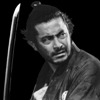



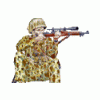





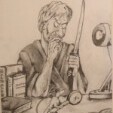



.thumb.jpg.bc10b59027a00aa142dce0349f3ba9e0.jpg)



.jpg.b1e1fa96d9a0ca5e6d838aca46f85ddd.jpg)


